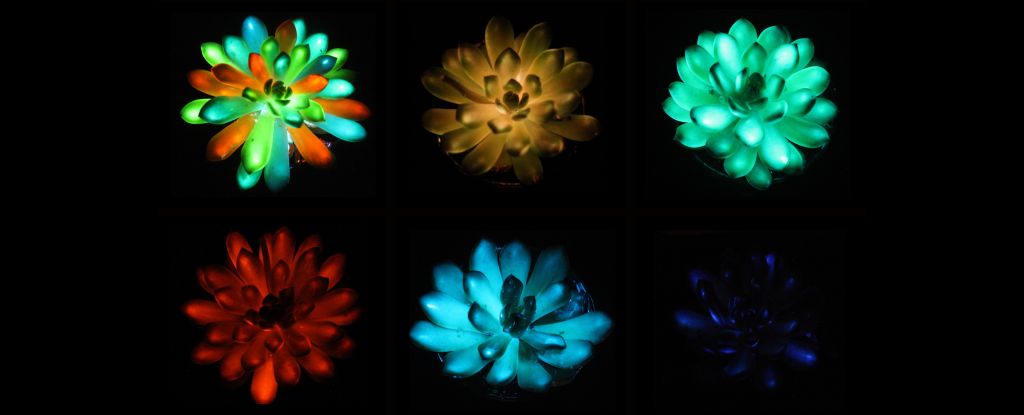
A team of scientists at South China Agricultural University has successfully created succulents that glow in the dark. This innovative development allows the plants to emit light in various colors when exposed to sunlight, offering a unique and visually stunning alternative to traditional lighting. The breakthrough was achieved through a process that involves injecting specific phosphor particles into the plants, which can be recharged using solar energy.
The glowing succulents emit a gentle luminescence, reminiscent of the vibrant flora depicted in the movie Avatar, according to biologist Shuting Liu. “We wanted to make that vision possible using materials we already work with in the lab,” Liu stated. She envisions a future where glowing plants might replace streetlights, providing an eco-friendly and aesthetically pleasing means of illumination for homes and gardens.
To develop these plants, the researchers experimented with various methods for integrating phosphor particles, commonly used in glow-in-the-dark toys and stickers. The challenge lay in finding the right particle size that would both glow effectively and permeate the plant tissue. After testing different plants, including golden pothos and bok choy, they discovered that particles measuring 7 micrometers—about the size of a human red blood cell—produced the best results. Surprisingly, the dense tissues of succulents allowed for a stronger and more uniform glow compared to airier plants, which the team initially expected to perform better.
Liu expressed her surprise at the results, noting, “It was really unexpected. The particles diffused in just seconds, and the entire succulent leaf glowed.” Each leaf must be treated individually, and while the glow lasts for approximately two hours after recharging, the initial findings suggest the possibility of creating a rainbow of glowing succulents in red, green, violet, and blue.
The next phase of the research will focus on enhancing the longevity of the glow. Currently, each plant’s luminescence diminishes over time, similar to traditional glow-in-the-dark materials. The researchers hope that by refining their techniques, they can develop plants that provide sufficient light for reading and other activities in low-light conditions.
“I just find it incredible that an entirely human-made, micro-scale material can come together so seamlessly with the natural structure of a plant,” Liu remarked. “The way they integrate is almost magical. It creates a special kind of functionality.”
This groundbreaking research has been published in the journal Matter, marking a significant step forward in the intersection of botany and technology. As scientists continue to explore the potential of glowing plants, the dream of a luminous landscape may become a reality, combining beauty and sustainability in our everyday lives.






